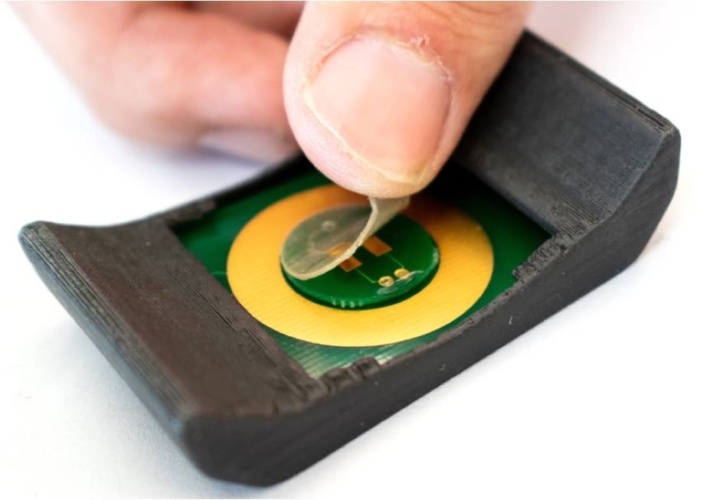
Developed by engineers at UCLA, the system looks for chemical indicators found in sweat to give a real-time indication of what is happening inside the body. A study detailing the technology has been published in Science Advances.
Wearable wrist device tracks metabolites via sweat
Glasgow University team power wearables with sweat
Smartwatches can track of how far someone has walked, slept and what their heart rate is. Working with a tethered smartphone or other devices, a smartwatch records those health indicators over a long period of time, but they cannot monitor a person’s body chemistry.
For that, they need to track biomarker molecules found in body fluids that are highly specific indicators of health, such as glucose and lactate, which tell how well the body's metabolism is working.
To address that need, the researchers engineered a disposable, double-sided film that attaches to the underside of a smartwatch. The film can detect molecules such as metabolites and certain nutrients that are present in body sweat in very tiny amounts. They also built a custom smartwatch and an accompanying app to record data.
"The inspiration for this work came from recognising that we already have more than 100 million smartwatches and other wearable tech sold worldwide that have powerful data-collection, computation and transmission capabilities," said study leader Sam Emaminejad, an assistant professor of electrical and computer engineering at the UCLA Samueli School of Engineering. "Now we have come up with a solution to upgrade these wearables into health-monitoring platforms, enabling them to measure molecular-level information so that they give us a much deeper understanding of what's happening inside our body in real time."
According to UCLA, the skin-touching side of the adhesive film collects and analyses the chemical makeup of droplets of sweat. The watch-facing side turns those chemical signals into electrical ones that can be read, processed, and then displayed on the smartwatch.
The co-lead authors on the paper are graduate student Yichao Zhao and postdoctoral scholar Bo Wang.
"By making our sensors on a double-sided adhesive and vertically conductive film, we eliminated the need for the external connectors," Zhao said in a statement. "In this way, not only have we made it easier to integrate sensors with consumer electronics, but we've also eliminated the effect of a user's motion that can interfere with the chemical data collection."
"By incorporating appropriate enzymatic-sensing layers in the film, we specifically targeted glucose and lactate, which indicate body metabolism levels, and nutrients such as choline," Wang said.
While the team designed a custom smartwatch and app to work with the system, Wang said the concept could someday be applied to popular models of smartwatches.




Red Bull makes hydrogen fuel cell play with AVL
Formula 1 is an anachronistic anomaly where its only cutting edge is in engine development. The rules prohibit any real innovation and there would be...